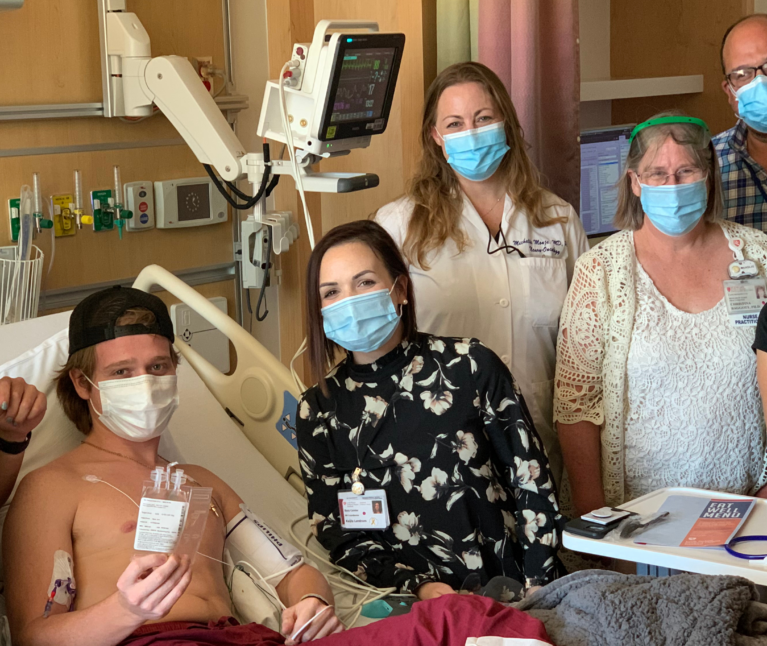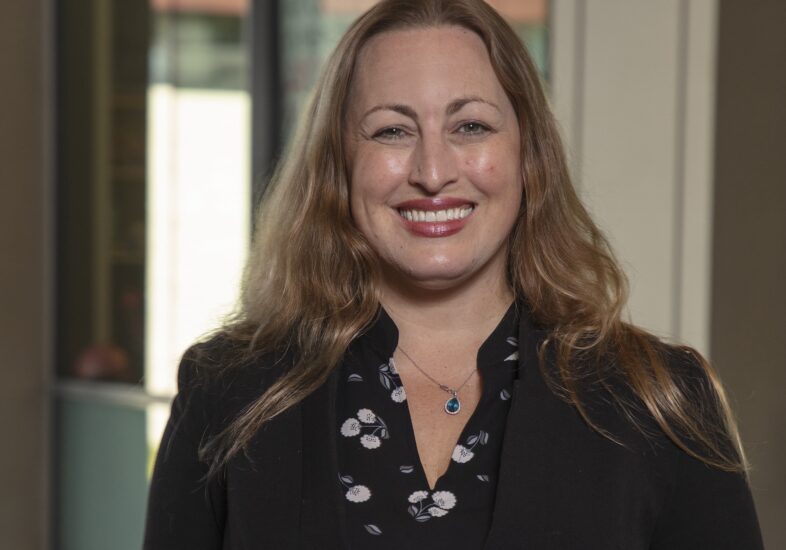New immunotherapy shows promise for patients with deadly brain tumor.
When Jace Ward came to Lucile Packard Children’s Hospital Stanford in September 2020 to join a clinical trial for a novel therapy, he had been fighting a deadly brainstem tumor for more than a year. His diagnosis was diffuse intrinsic pontine glioma, or DIPG, which conventional cancer treatments can’t cure. The disease has a five-year survival rate of less than 1 percent.
There was no hope for patients like Jace—until recently when he became one of the first four patients with DIPG, or another closely related cancer affecting the spinal cord, to receive immune cells engineered to fight the disease. Though all the trial patients died of their disease or its complications, three of them experienced significant clinical benefits from the engineered cells.
“These four patients are heroes,” says the study’s principal investigator, pediatric neuro-oncologist Michelle Monje, MD, PhD. “They taught us so much, and that knowledge is already being applied to help other kids.”
The FDA approved the use of engineered immune cells, also known as chimeric antigen receptor T-cells, or CAR-T cells, to treat blood cancers in 2017, but the technology has never before succeeded against solid tumors.
Although the research team has yet to achieve a cure for this type of glioma, they consider their findings a milestone.
“We see significant anti-tumor activity with these CAR-T cell therapies in this dreaded disease,” says Crystal Mackall, MD, who partnered in the new research with Monje. Mackall is a cancer immunotherapy expert and the Ernest and Amelia Gallo Family Professor of Pediatrics and Internal Medicine. “The findings are a hopeful sign for many types of brain tumors, not just this one,” she adds.
Mackall and Monje’s work was made possible through generous philanthropic support from donors—many of whom are parents fueled by the loss of their child due to this disease and dedicated to finding a cure.
The Case of Jace Ward
Jace was 20 when he was diagnosed with the glioma in early 2019, after a few weeks of disturbance in his peripheral vision. He and his family were shocked by the prognosis: Jace’s neurologist in Kansas predicted he had six to nine months to live. He received an experimental chemotherapy agent on a compassionate-use basis and lived with the disease for almost 14 months before the opportunity to join the Stanford trial arose.
By the time he and his mom, Lisa, arrived at Stanford, the tumor was progressing. Jace knew the trial was unlikely to save his life. “He said, ‘I know that I’m going to die, and I know this
therapy will one day be the thing that cures other kids,’ ” Monje recalls. “This tough, football-playing 21-year-old said to me, ‘I don’t want it to be a 5-year-old who has to go first.’ ”
“I can’t die. I’m busy.”
When Jace joined the CAR-T cell trial, he was a junior at Kansas State University, studying entrepreneurship and prelaw. After his diagnosis, Jace became an advocate for kids with DIPG.
“Jace spoke at Congress, the National Institutes of Health, and in rare-cancer virtual forums,” Lisa says.
Jace worked on campaigns that raised more than $2.5 million to expand cancer research and treatment access. He also worked to launch a nonprofit that helps kids with brain tumors get expert opinions on clinical trials they can join.
“Jace would comfort his friends and family by saying, ‘I can’t die, I’m busy,’ ” Lisa says. “That became a mantra for him.”
A week after Jace received his first infusion of CAR-T cells, he had fever and low blood pressure, signs of cytokine elevation, and his neurological symptoms worsened.
But by two weeks, he was experiencing a remission of symptoms and feeling more sensation on his face. His previously awkward walking gait became almost normal. Within a month, his neurological exam was nearly normal, too.
“To see a young man with rapidly progressive DIPG regain an almost normal neurological exam is unheard of,” Monje says. “I felt for the first time that we were going to cure this disease someday.”
Jace was able to fulfill a dream of going to the Super Bowl in February 2021 with his dad, Roger, to watch their beloved hometown team, the Kansas City Chiefs. “It was so freeing for him, such a good glimmer of hope,” Lisa says. On June 30, 2021, Jace was hospitalized in St. Louis and died July 3, leaving behind his grieving parents, brother, sister, sister-in-law, and nephew.
“Do I wish he were here, never knowing what DIPG was? Of course,” says his mother. But she has gained a sense of peace and purpose from their work as advocates for patients. “Jace’s desire to help children, his real need to speak for them, gave me such a glimpse of the man he had become.”


